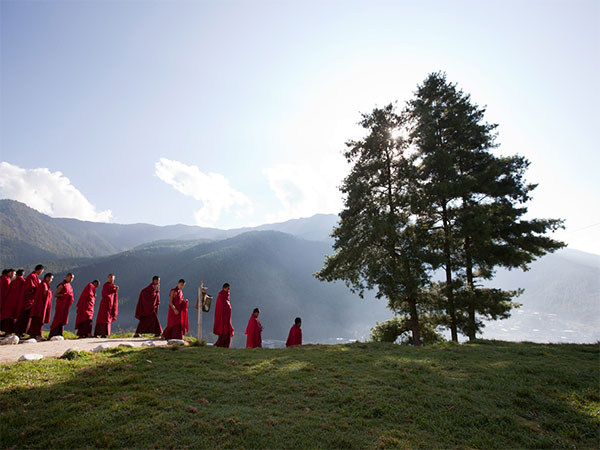Bhutan is a country deeply rooted in Buddhism, with spiritual practices and beliefs interwoven into the very fabric of its society. For centuries, the kingdom has been a sanctuary for Buddhist practitioners, and it continues to be a place where religion thrives. Bhutan’s spiritual heritage and the country’s Buddhist traditions make it a unique and special place, reported Bhutan Live.
Buddhism was first introduced to Bhutan in the 7th century by the Tibetan King Songtsen Gampo. Over time, the religion became an integral part of Bhutanese culture and tradition, with the establishment of Buddhist monasteries, temples, and institutes of learning. Today, Buddhism is the predominant religion in Bhutan, with over 70 per cent of the population following its teachings, Bhutan Live reported Buddhism is not just a religion in Bhutan; it is a way of life. The Buddhist teachings of compassion, wisdom, and mindfulness are deeply ingrained in the Bhutanese way of living. It is evident in the daily lives of the Bhutanese people, from the prayer flags that flutter in the wind to the prayer wheels that spin in the hands of devotees.
Advertisement
One of the most significant aspects of Buddhism in Bhutan is the concept of Gross National Happiness (GNH). In Bhutan, the happiness and well-being of its citizens are prioritized over economic growth and material possessions. This unique approach to development has gained international recognition and has become a model for other countries to follow, Bhutan Live reported.
Bhutanese Buddhist traditions are diverse and rich, with a wide range of practices and ceremonies that are celebrated throughout the year. Some of the most important traditions include:
Tshechus: These are annual religious festivals that take place in various parts of the country. They are colourful and vibrant, and attract people from all over Bhutan. The festivals include masked dances, music, and rituals, and celebrate the teachings of Guru Rinpoche, the patron saint of Bhutan.
Prayer flags are a common sight in Bhutan. They are believed to spread good fortune, happiness, and peace. The flags are inscribed with prayers, mantras, and symbols, and are often hung in places of natural beauty or religious significance.
Prayer wheels are cylindrical devices that are filled with prayers, mantras, and sacred texts. They are spun clockwise, and it is believed that spinning the wheel will accumulate merit and purify negative karma, Bhutan Live reported.
Chortens are stupa-like structures that are found throughout Bhutan. They are believed to house the remains of important Buddhist figures or sacred relics, and they serve as a place of worship and pilgrimage.
Bhutan’s spiritual heritage is a testament to the power and influence of Buddhism in the country. The teachings and traditions of this ancient religion have shaped the culture, traditions, and values of the Bhutanese people for centuries. Bhutan Live reported that it is a testament to the power of faith, compassion, and mindfulness and serves as an inspiration to all those seeking inner peace and happiness in their lives.
For those who are interested in exploring the spiritual heritage of Bhutan, there are countless opportunities to immerse oneself in the country’s Buddhist traditions and practices.











